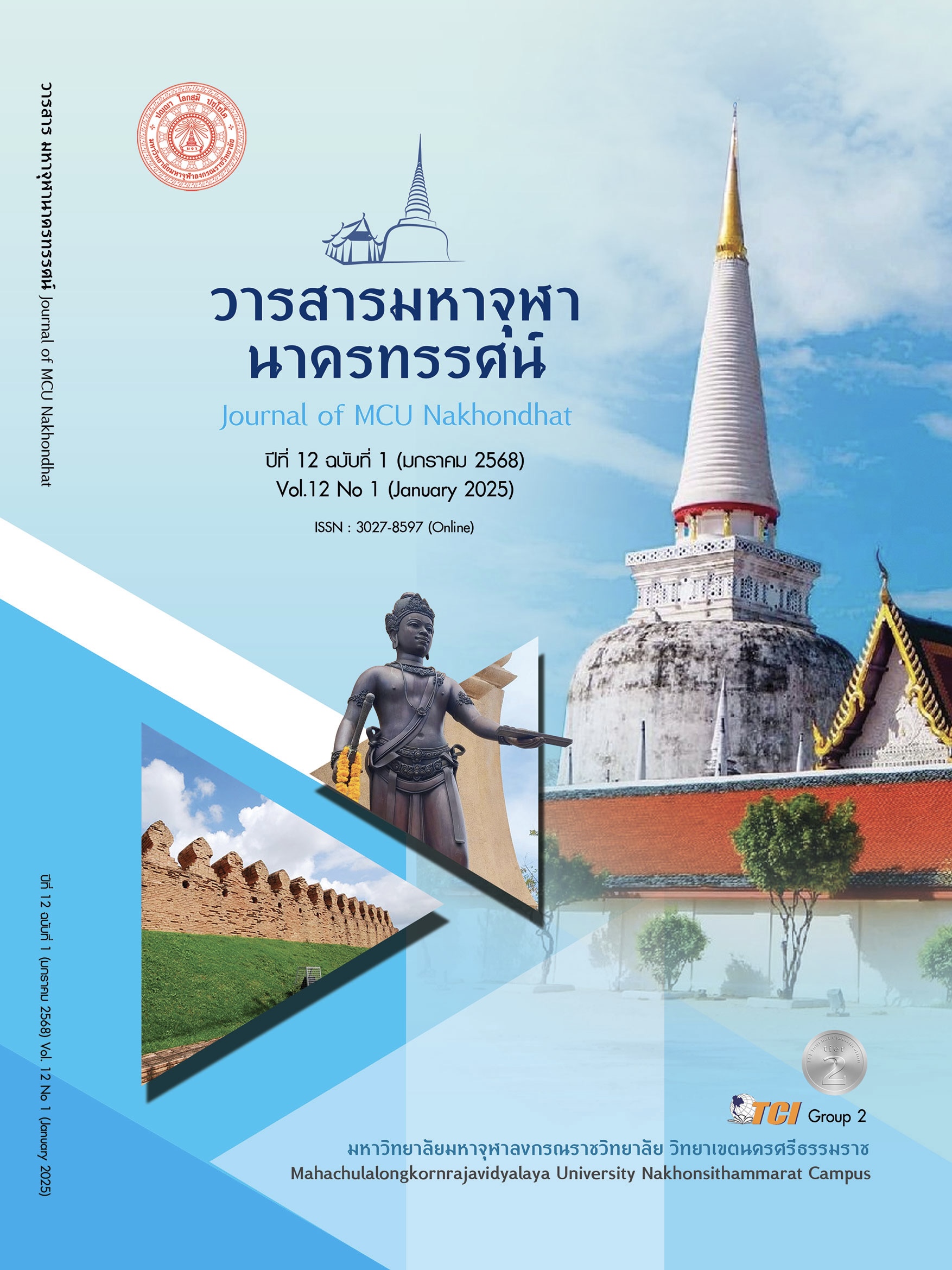DYNAMIC OF BANGPHO: FROM OLD RIVERFRONT COMMUNITY TO WOOD STREET
Main Article Content
Abstract
This academic article aims to study and analyze the formation and transformation of Bang Pho into a timber trading district across different periods, focusing on factors driving these changes. The study is divided into three significant periods. During the early Rattanakosin period (1782 - 1851), settlements along rivers and canals were established by diverse ethnic and religious groups, creating communities characterized by cultural diversity. These communities relied heavily on waterways as their primary transportation routes. The mid-Rattanakosin period (1851 - 1932) witnessed economic transformation spurred by the Bowring Treaty, which led to significant trade-driven growth. This period saw advancements in land and water transportation and the introduction of Western technologies in the wood industry, resulting in expanded employment opportunities and migration from rural areas. Communities began clustering around temples and other religious landmarks, reflecting the growing significance of these spaces. From the reign of King Rama VII to the present (1932 - present), political and governance changes reshaped urban dynamics. The timber trade hub moved from Wat Saket to Bang Pho following a major fire, and skilled woodworkers congregated in Bang Pho. Additionally, zoning laws regulating industrial activities facilitated the relocation of wood-related industries to the area. The Prachanaruemit Alley community transitioned from agriculture to commerce and small-scale furniture production, culminating in the establishment of Bang Pho as a prominent timber trading district. The study concludes that key factors influencing the evolution of Bang Pho include physical changes such as shifts in settlement patterns and transportation development, as well as political and governance policies that have significantly impacted the community's social and economic landscape.
Article Details

This work is licensed under a Creative Commons Attribution-NonCommercial-NoDerivatives 4.0 International License.
References
กรรณิการ์ สุธีรัตนาภิรมย์. (2016). ก่อร่างสร้างเมืองจากชุมชนบางกอกสู่กรุงรัตนโกสินทร์. กรุงเทพมหานคร: ภาควิชาโบราณคดี คณะโบราณคดี มหาวิทยาลัยศิลปากร.
จารุวรรณ ขำเพชร. (2018). ภูมิทัศน์ชาติพันธุ์: แผนที่ชุมชนชาติพันธุ์ในกรุงเทพมหานคร. ใน รายงานการวิจัย. ศูนย์มานุษยวิทยาสิริธร (องค์การมหาชน).
ธนภัทร์ ลิ้มหัสนัยกุล. (2018). ศิลปกรรมวัดราษฎร์ในย่านเก่ากรุงเทพฯ. นนทบุรี: มิวเซียมเพรส.
ประไพ วิริยะพันธุ์. (2022). สยามเทศะ. เรียกใช้เมื่อ 18 กันยายน 2567 จาก https://www.facebook.com/permalink.php/?story_fbid=1082835815712255&id=323215901674254
ผุสดี จันทวิมล. (1998). เวียดนามในเมืองไทย. กรุงเทพมหานคร: โรงพิมพ์มหาวิทยาลัยธรรมศาสตร์.
มรกต อารียะ. (2535). การค้าไม้สักในดินแดนล้านนาในรัชสมัยพระบาทสมเด็จพระจุลจอมเกล้าเจ้าอยู่หัว พ.ศ. 2411 - 2453. ใน วิทยานิพนธ์มหาบัณฑิต สาขาประวัติศาสตร์. มหาวิทยาลัยศรีนครินทรวิโรฒ.
มัชฌิมาศ มรรคา และเทิดศักดิ์ เตชะกิจขจร. (2564). การเปลี่ยนแปลงห่วงโซ่อุปทานของไม้สักในงานสถาปัตยกรรม Transition of Teak Timber Supply Chain in Architectural. วารสารสาระศาสตร์, 4(4), 704-715.
วิมลรัตน์ อิสระธรรมนูญ. (2018). ย่านชุมชนเก่าในกรุงเทพฯ. กรุงเทพมหานคร: ปาป้า พริ้นติ้ง เฮาส์.
แวน รอย, เอ็ดวาร์ด. (2022). ก่อร่างเป็นบางกอก. กรุงเทพมหานคร: โรงพิมพ์มติชน.
สมศักดิ์ สว่างวิบูลย์พงศ์. (2012). อนุสรณ์ในงานพระราชทานเพลิงศพ. กรุงเทพมหานคร: ด่านสุธาการพิมพ์.
Dproperty. (2564). รู้จักบางโพแบบเจาะลึก. เรียกใช้เมื่อ 20 กันยายน 2567 จาก https://www.ddproperty.com/areainsider/บางโพ/article/รู้จักบางโพแบบเจาะลึก-12206


